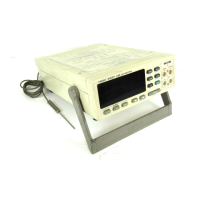9
────────────────────────────────────────────────────
1.3 Measurements and Working Systems
────────────────────────────────────────────────────
NOTE
For example, for a copper conductor, if when the initial temperature t
0
is 20℃
the resistance value r
0
is 200 mΩ, and the present ambient temperature is 25
℃ and the measured resistance value r
t
is 210 mΩ, then the temperature rise
is given as follows:
r
t
Δt=
r
0
(T + t
0
) − (T + t)
210×10
-3
=
(200×10
-3
)×(235 + 20) - (235 + 25)
= 7.75[℃]
As a result, the present temperature of the resistance, t
r
can be found as
follows:
t
r
=t
0
+ Δt = 20 + 7.75 = 27.75℃
When the measured object is not copper or aluminum, from the expression
shown for the temperature correction and the above expression, if the
temperature coefficient is α
t0
, the constant T can be found from the following
expression:
1
T=
-t
0
α
r0
For example, since the temperature coefficient of copper at 20℃ is 3930 ppm,
the constant T at this time is given by
1
T=
- 20 = 234.5,
3930×10
-6
and is substantially the same as the constant 235 laid down by the JIS
standard.
Note that the temperature probe is only designed to measure ambient air
temperature, and it is impossible to measure the surface temperature.
If the temperature probe is to be used in the measurement, make sure that
the 3227 and the temperature probe are thoroughly warmed up before the
measurement. The temperature probe and the device to be measured should
be placed close together during the warm-up, so that both will be as close to
the same temperature as possible during the measurement.

